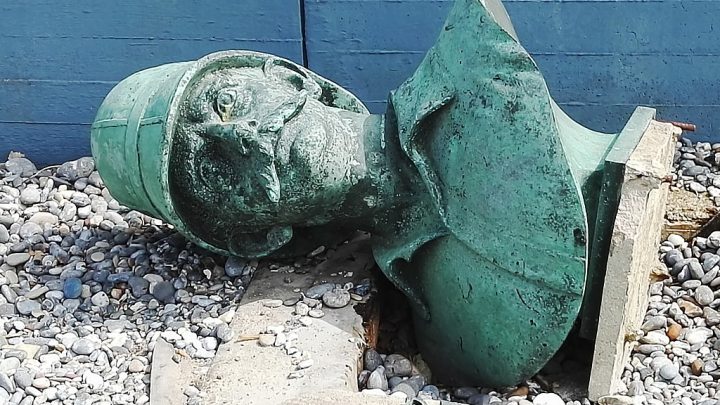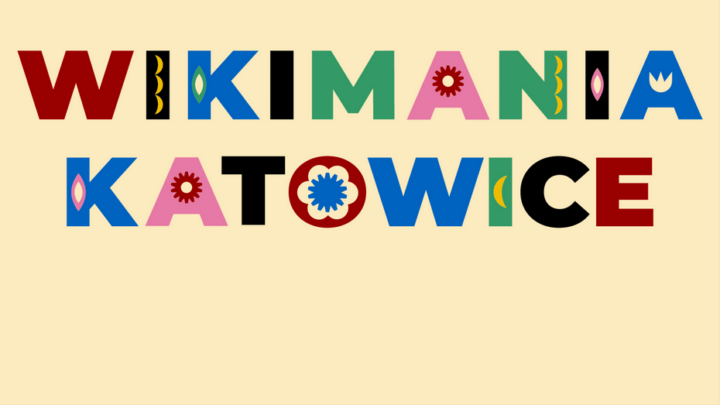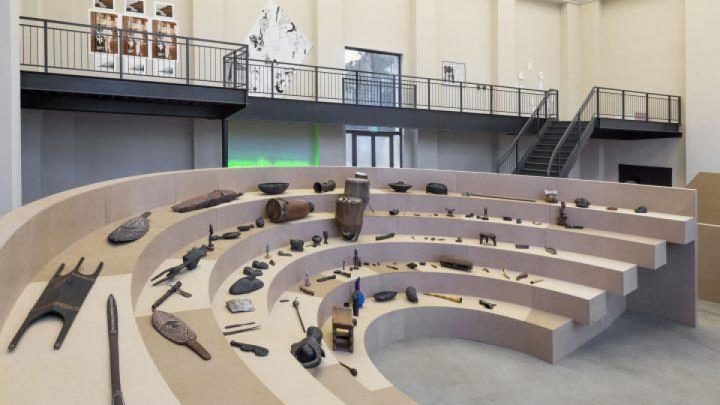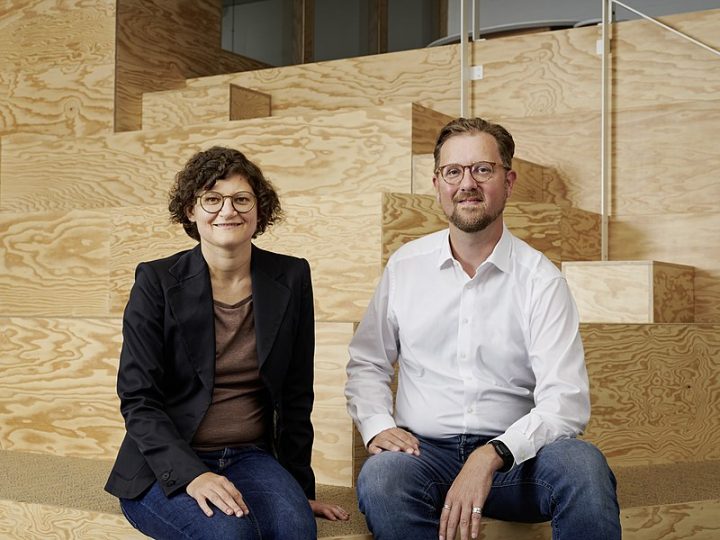Open and Fair! Questions on how to handle digital copies of objects in collections from colonial contexts (Part 1)

Sabine Müller
Lucy Patterson
Alex Möller
Claudia Bergmann
19. October 2021
Free access to cultural heritage is a key objective for Wikimedia Deutschland (and the entire Wikimedia movement). Cultural heritage is the starting point for all narratives of a collective memory any community’s knowledge is based on. Therefore, free access to cultural objects is one of Wikimedia’s core objectives. Yet it has also become apparent that due to historically established power structures and the associated construction and perception of self and other, fundamental biases are part of the narratives that form the basis of our knowledge and our assumptions. For this reason, it is not only crucial for Wikimedia to advocate open access to cultural objects, but above all also the question how to shape access. With a view to cultural heritage, this has a particular impact on sensitive collected objects from contexts of unlawful appropriation.
The colonial period as a blank space in German historical consciousness
The public debate about cultural property that was unlawfully acquired or appropriated by force and is held in collections of German cultural institutions is certainly not new in Germany, either. In the past, it primarily took place in the context of domestic, authoritarian and dictatorial regimes, in particular in the historical analysis and processing of National Socialism. Yet the public discussion about cultural property from colonial contexts held in German collections is more recent. This long-term silence and marked absence corresponds with the lack of colonial history in history lessons in Germany. This is due to a historic narrative that presented colonialism as a side issue of German international affairs in the
20th century. The report and the discussion about the restitution process in France1, building the Humboldt Forum 2 as well as street names in Berlin and elsewhere3 have now also drawn the attention to this part of history in Germany and provide the opportunity to critically examine the (cultural) heritage from that time.
Transparent reappraisal and ethical obligations
The 3-road strategy4 initiated by the Federal Government Commissioner for Culture and the Media, the Minister of State for International Cultural Policy at the Federal Foreign Office, the Federal Ministers of Education and Cultural Affairs and the umbrella organizations at the local government level is an initial advance in this process of critical examination. This strategy describes national handling of collections from colonial contexts under the title Access-Transparency-Cooperation: Guidelines for a “3-road strategy“ on the documentation and digital publication of collections from colonial contexts held in Germany.
By adopting this strategy, Germany has chosen a national approach to deal with reappraisal and restitution. The overarching goal of the strategy is to create the ”highest level of transparency […] by conducting inventories of, digitising and digitally publishing the holdings in question“5. The three pillars or three roads already outlined in detail in the title are access (already digitized collections are made accessible), transparency (analysis and basic digital documentation) and cooperation (publication of digitized collections after consultation with members of the communities of origin and representatives of the diasporas).
The objective to create the “greatest possible degree of transparency” by means of digitization and publication appears to be ideally suited to the goals of Wikimedia Deutschland: For a long time now, Wikimedia has formulated it as a wish and a demand to conduct extensive inventories and to analyze, digitize and publish the objects in collections and depots under free licenses. However, a strategy pursuing the full digitization of all objects has to be seen in a critical light6: This open approach also means to assume an ethical responsibility for the numerous objects that will be revealed and – this is our aspiration – also make them accessible to the communities of origin. The questions we have to ask ourselves are whether the current practice is not an expression of an undiminished imperialist and hegemonic attitude after all. Do our preconceptions perpetuate narratives created by previous and still existing power structures? We have to consider various different dimensions in this context and briefly outline them below.
Is copyright a suitable tool to describe the rights of communities of origin?
The legal status of the digital copy and its relationship to the object has only been clarified to a limited extent7. Hence the legal basis for deciding about the question of documentation and publication is not clear, either. A detailed examination and clarification of the following aspects would be necessary: Who is the owner of the digital copy of the object? For this purpose, it is not only necessary to verify the origin and appropriation of the respective object, but first and foremost to work out the relationship of the digital copy to the material object. Is it even possible to detach decisions about the digital copy from the physical object? Or should the question whether digitization will actually happen be directly linked to the question of sovereignty over the object? And at an even more basic level we would have to consider the following: Are the legal framework and the legal categories we use in Germany and other European countries even suitable as a basis to make these decisions? Can we use copyright to adequately describe property rights in or for the communities of origins, for example? And can it then offer a basis for free publication, for instance in Wikimedia projects?
How do we describe objects in accordance with their different cultural identities?
Therefore, the documentation and description of the cultural identity of an object is also inherently linked to its legal status. One example that received significant media attention is the case of the masks of the Kogi 8. In this example, the decisive factor is the purpose of the artefacts. It is not about authorship, but about the way these masks are used. Juan Mayr Maldonado’s report about the Kogi’s visit to the Ethnological Museum of Berlin is really striking in this context. It offers insights into the spiritual and emotional dimension of these objects which is not accessible to anybody outside of this context9. He describes how the masks are stored in the depot among thousands of other objects in the applied classification “similar“ objects (i.e. other masks) and how the visitors – spiritual and secular Kogi leaders – still immediately detected their masks and were able to enter into a dialogue with them: He relates how the masks communicate with the Kogi representatives, expressing their feelings of being lost and confused. This perception of the object world may not be immediately understandable when applying Western epistemological categories: As shown in the example, a community of origin can perceive objects can be “alive” rather than inanimate.
It is increasingly common that the identity of objects is enriched by their history and multiple changes of ownership. Yet this also has the effect that certain narratives are under threat of being marginalized and thus obliterated from the cultural memory of the object. That is why the remaining narratives are frequently characterized by a mono-perspective view, or they are even exoticizing, racist, derogatory and ‘nostalgicizing’ – or they accentuate “otherness” in some other form.
Consistent and systematic translation and release of the narratives with priority seems to be a necessary prerequisite, with a much greater significance than just being the free section add-on to museum practice. The question should be: What are the inherent cultural identities of the object and what does this mean for the cultural identities of its digital copy? Are our fundamental epistemic principles, and ergo our concepts, categories and ways of perceiving and describing the world and condense it into knowledge appropriate means to represent the objects in accordance with their original knowledge contexts (epistemic contexts)? And how can we describe objects in a way that is a lasting representation of the different dimensions, contexts and perspectives of their identity? Does its cultural identity actually permit that an object is displayed, or even digitally documented or published?
Ultimately, these questions cannot be answered without close cooperation with representatives of the communities of origin. However, there are no suitable processes in place yet, and even if the 3-road strategy demonstrates sensitivity in its approach, it is apparent that this process is subordinate to many other decisions in terms of priority and chronology. The pilot phase to launch the 3-road strategy is an opportunity to carry out a feasibility study, for example, in order to test what a structured cooperation might look like. It is also key in this context to apply radical self-reflection to issues including sovereignty over the process, powers and perspectives.
How can we publish transparently without infringing personal rights and dignity?
An honest examination of different perspectives and attributions is crucial for the free and open publication on national and international platforms and in projects. So far, it remains unclear how it can be clarified or tagged whether the publication of the digital copy is legal or wanted in the eyes of the country of origin. As outlined above, this has to be resolved early on in the process – in actual fact even prior to digitization. Even so, the ethical responsibility to verify remains at this point. This also always includes the question whether the dignity of individuals or groups is violated by what is on display. So what are ways of also facilitating transparency and access for the communities of origin without violating their personal rights and dignity by premature digitization or publication?
This moves representation and communication further into the focus. On the one hand, this means that we have to find a sensitive way of dealing with contextualization and enhance the narrative with different perspectives. It is widely known that there are inequalities in Wikipedia, for example, because an overwhelming majority of authors is either from the global North or lives there, publishes in only a few languages, and belongs to a specific gender and age range. This makes it even more challenging to jointly develop a balanced narrative.
In addition, it has to be ensured that the published objects can be found. To have structured metadata is key in this context. With that comes the equally central issue that our Western systems of order and hierarchies these metadata are based on may completely miss the point of the respective object. This is also a type of dominance or patronizing behaviour that we can only resolve together by also creating transparent systems of knowledge categorization for different knowledge traditions.
Conclusion and outlook
Transparency and openness have to be central goals in dealing with collections from colonial contexts. On closer examination of the cultural heritage from German colonial times, it also becomes apparent that transparency and openness bring their own challenges. Most of these challenges cannot be resolved solely by the nations of the perpetrators, but only by means of consultations and fair and collaborative exchange with members of the communities of origin, the diasporas and institutions that preserve their cultural heritage in the regions of origin. It is most certainly a gigantic task: We cannot assume that communities of origin speak in one voice or that we can still find contacts representing cultures that ceased to exist. Nevertheless, it seems to be advisable to seek exchange at the earliest possible time, because we are facing fundamental issues that do not only need awareness and expertise, but also appropriate (and most certainly complex) processes. Although the 3-road strategy shows a certain sensitivity with respect to its own project, for example, the approach itself does not really consider these questions, and it is left to those engaged for the pilot phase to resolve them. These and further questions need to find more room in the public debate and be included in additional draft strategies.
In this blog series and its participation in “Shaping access! More responsibility for cultural heritage“, Wikimedia wants to create a space to openly and collectively reflect about appropriate ways to answer some of the questions and ask some more.
- cf. the so-called “Sarr-Savoy Report” 2018: http://restitutionreport2018.com/ as well as the response of the jurists at the University of Exeter, Mathilde Pavis and Andrea Wallace: Response to the 2018 Sarr-Savoy Report Statement on Intellectual Property Rights and Open Access relevant to the digitization and restitution of African Cultural Heritage and associated materials (March 25, 2019). Journal of Intellectual Property, Information Technology and E-Commerce Law 10(2) 2019, 115-129, Available at SSRN: https://ssrn.com/abstract=3378200 or http://dx.doi.org/10.2139/ssrn.3378200). We would like to note at this point that the report and the response to it have provided the authors with much food for thought – many of our reflections build on these sources.
- cf. Jan Böhmermann’s following interview with Benedict Savoy, for example:
https://www.youtube.com/watch?v=nE89z19uha4 (2021) or the following coverage:
https://www.dw.com/en/colonial-legacy-where-do-africas-treasures-belong/av-57318509 (July 2021) https://www.dw.com/de/humboldt-forum-er%C3%B6ffnung-koloniales-erbe-raubkunst-kolonialismus/a-59251512 (September 2021) - cf. the following selection of media reports on Berlin, Freiburg or Würzburg in this context:
https://www.zdf.de/nachrichten/politik/u-bahnhof-mohrenstrasse-berlin-wird-umbenannt-100.html (03.07.2021), https://taz.de/Debatte-um-U-Bahnhof-Mohrenstrasse-in-Berlin/!5694152/ (08.07.2021), https://www.zdf.de/nachrichten/panorama/mohrenstrasse-kolonialismus-geschichte-kommunen-rassismus-100.html (21.08.2021) Freiburg: https://rieselfeld.biz/rieselfeld-infos/aktuelles/geschichte-und-fakten-%C3%BCber-das-rieselfeld/ludwig-heilmeyer-weg-wird-in-george-de-hevesy-weg-umbenanntWürzburg: https://www.br.de/nachrichten/bayern/kommission-empfiehlt-mehrere-strassenumbenennungen,SInKp0d - cf. also the summary of the German Contact Point for Collections from Colonial Contexts
https://www.cp3c.de/3-Wege-Strategie/ (https://www.cp3c.org/3-road-strategy/) - cf. Access-Transparency-Cooperation: Guidelines for a „3-road strategy“ on the documentation and digital publication of collections from colonial contexts held in Germany, p.1
- cf. Pavis and Wallace
- cf.. Pavis and Wallace, concerning the legal uncertainty, particularly refer to chapter 1, pp. 117-119
- e.g. https://www.deutschlandfunkkultur.de/ethnologisches-museum-berlin-volk-der-kogis-fordert-zwei.1013.de.html?dram:article_id=349554
- https://www.kulturstiftung.de/video-panel-3-cultural-exchange-and-international-cooperation/ , Minute 36:40 – 39:35




